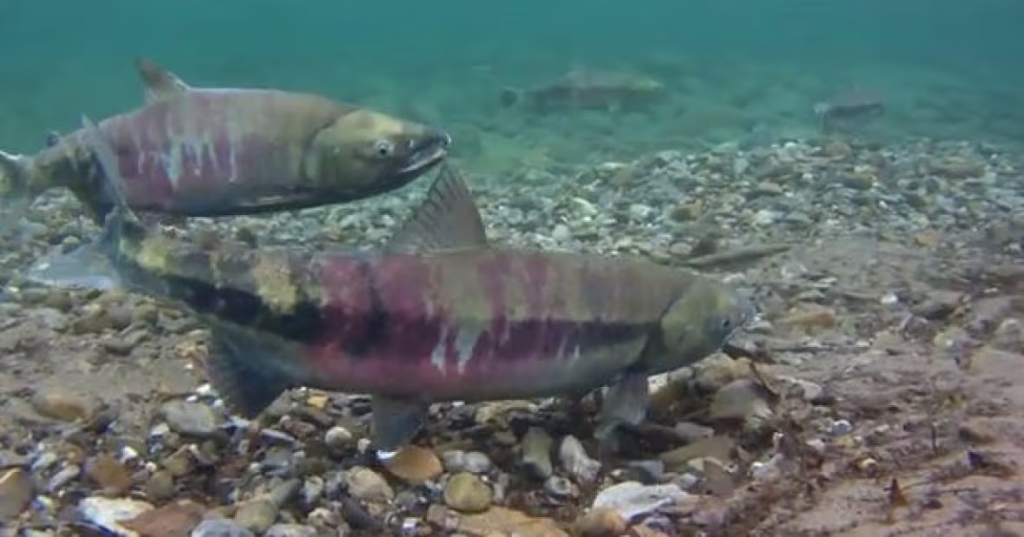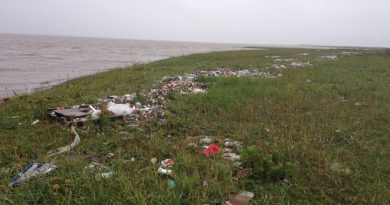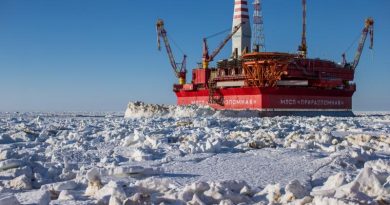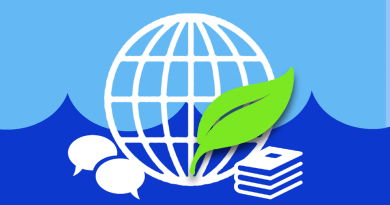2023 was another bad year for chinook, fall chum salmon, Yukon River Panel hears

Panel held its post-season meeting last week in Whitehorse
Alaska and Yukon representatives met in Whitehorse last week to discuss the 2023 chinook and fall chum salmon runs on the Yukon River, which once again failed to meet Canadian conservation goals.
An estimated 58,529 chinook salmon entered the river last year, according to public presentations by the Alaska Department of Fish and Game, and Fisheries and Oceans Canada (DFO) during the Yukon River Panel’s post-season meeting. It was the second-smallest run on record — 2022 was the smallest — and not enough to meet spawning escapement goals on either side of the border.
The goals set out the minimum range of fish that need to make it to their spawning areas to healthily sustain the population. The bottom end of the Canadian goal is 42,500 chinook, though in recent years, Canada has started aiming for the upper end of the range — 55,000. However, only 14,752 salmon were counted at the Eagle sonar near the Canadian border, marking the fifth year the spawning escapement goal hasn’t been met.
It also marked yet another year of authorities implementing fishing closures on both sides of the border, with the majority of Yukon First Nations also voluntarily refraining from harvest.
“That’s a tough situation because it directly affects our ability to support culture within our communities, connection to our land, learning about the land and the water and our relationship to that,” Kwanlin Dün First Nation Chief Sean Smith told meeting attendees this week.
DFO fisheries manager Jaclyn Kendall echoed that in a presentation, noting that fishing closures signify “not only a loss in food but also in connection to salmon.”
Besides failing to meet goals, the 2023 run continued another troubling trend that also began in 2019 — a large discrepancy between the number of Canadian-origin chinook detected entering the river, and the number that actually show up at the border.
Based on in-season genetic testing at Pilot Station, less than 200 km from the Bering Sea, there were an estimated 27,800 Canadian-origin chinook in the 2023 run, with 26,800 anticipated to make it to Eagle.
While Alaska reported a harvest of 1,630 chinook in 2023, including for assessment and research projects, the figure doesn’t fully account for the more than 12,000-fish discrepancy between the anticipated and actual numbers.
The reasons for the continued discrepancy, while currently being studied, still have not been fully explained, with water conditions — high temperatures and water levels can slow down or harm chinook — and the impact of ichthyophonus, a fish parasite, raised as possible culprits.
Fall chum also failed to meet goals
Fall chum salmon fared slightly better in 2023, meeting U.S. escapement goals but also not meeting either Canadian one. The salmon cross into Canada at two key points, with the majority swimming through on the Yukon River but a portion also branching off on the Porcupine River.
In total, 290,000 fall chum entered the mouth of the Yukon River, the fifth-smallest run in 50 years.
Only 22,090 were counted at the Eagle sonar, marking the fourth year in a row that the bottom end of the spawning escapement goal — 70,000 salmon — hasn’t been met. Meanwhile, the Porcupine sonar counted 15,654 fall chum, a larger number than the past three years but still not enough to meet the minimum goal of 22,000.

While the species hasn’t historically received as much attention as chinook, Canadian Yukon River Panel member Elizabeth MacDonald noted that fall chum also play an important ecological and cultural role, including for the Vuntut Gwitchin First Nation in the Yukon.
“Chum are the species in Old Crow on the Porcupine that is most needed, that’s the one with the highest harvest,” she said. “It’s not chinook, it’s not coho — it’s chum.”
‘We spend a lot of time talking about the past’
The continued decline once again drew calls for action.
“Safe-guarding the salmon is not solely an act of environmental conservation,” Ta’an Kwäch’än Council deputy chief Kristina Kane told meeting attendees.
“It’s a feat of cultural preservation, ensuring the survival of our customs and nurturing our spiritual bond with the earth and all of its offerings. To lose the salmon is to forfeit a part of ourselves. It is to sever a tie that has bound generations to generations.”
Canadian panel member Dennis Zimmerman, separately, suggested that the panel consider a different approach to the issue.
“I want to shift the narrative a little bit and talk about the rebuilding,” he said Thursday.
Canada, he explained, was already working on a strategy to rebuild Canadian-origin chinook stocks. Zimmerman proposed the panel start having bi-lateral discussions on rebuilding, with possible starting points including Canada sharing what it’s working on with the U.S., and discussions on what rebuilding salmon all along the Yukon River means or could look like.
“As we know, if we don’t do it across the entire watershed, it’s not going to work,” he said.
The idea was supported by panel members from both sides of the border, including fellow Canadian James MacDonald.
“We spend a lot of time talking about the past, but I feel like now is a good opportunity for us to visualize what the future looks like for ourselves, for our children, for future generations,” he said.
Canadian panel chair Steve Gotch said the panel will dedicate time to discuss rebuilding — including what it means, and what it could entail — at its 2024 pre-season meeting in April.
Related stories from around the North:
Canada: Yukon Energy puts focus on salmon as it seeks new 25-year licence for Whitehorse dam, CBC News
United States: New research suggest some salmon species expanding their range in the Arctic, Eye on the Arctic



